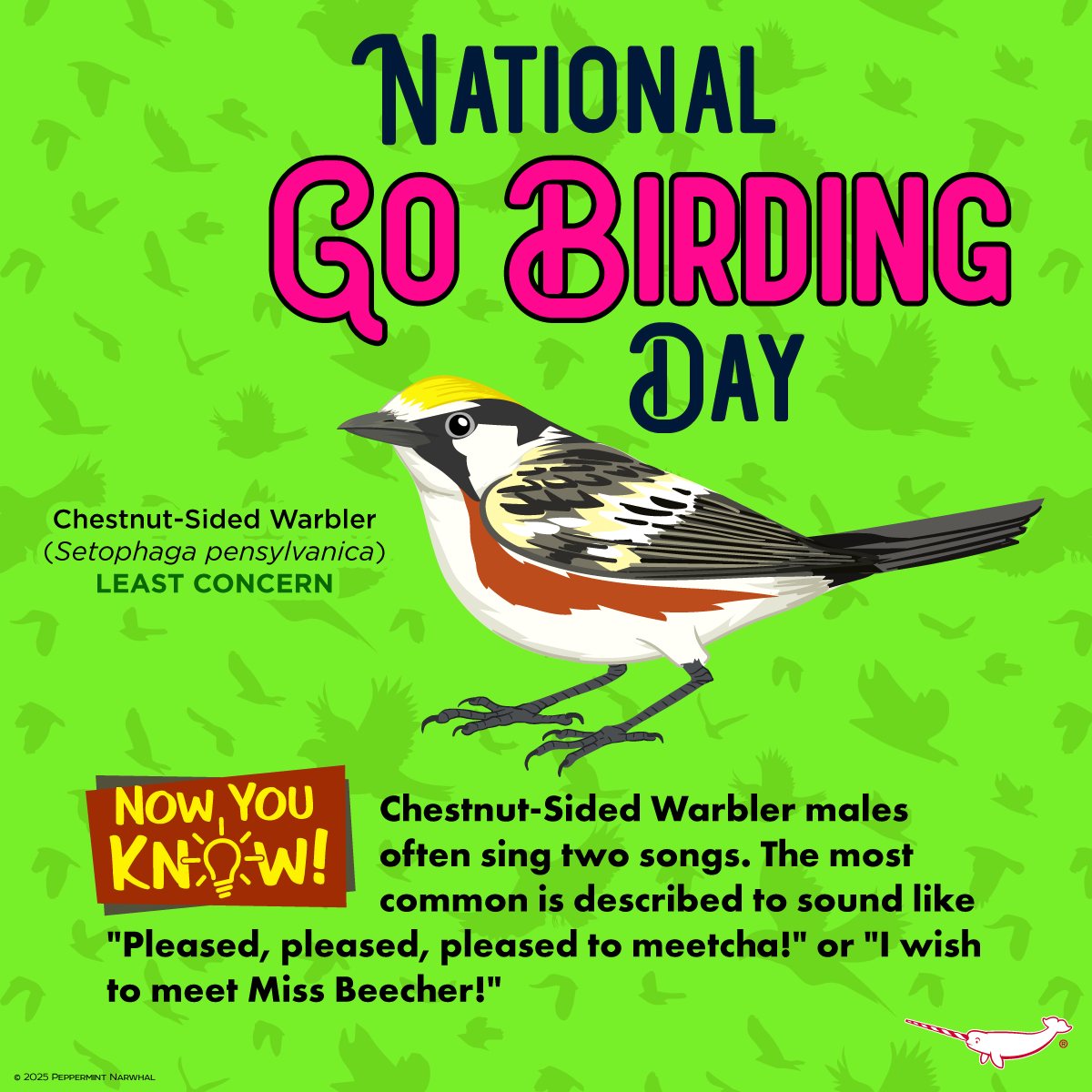- The significance and origins of Happy National Go Birding Day and its role in promoting bird conservation and awareness.
- Detailed description and behavior of the Chestnut-Sided Warbler, including its distinctive songs and migration patterns.
- The importance of spring migration for birdwatchers, highlighting key species to observe during this season.
- Conservation efforts and challenges facing bird populations, with a focus on habitats and human impact.
- Engaging the birdwatching community to share experiences and encourage participation in conservation activities.
Happy National Go Birding Day provides an opportunity to celebrate the joy of birdwatching while raising awareness about the importance of conservation. Observed annually on the last Saturday in April, this day invites people of all ages to venture outside and enjoy the beauty of birds in their natural habitats. The event highlights the critical role birdwatching plays in understanding and preserving avian species and encourages participation in citizen science initiatives.
One of the stars of spring migration and a favorite among birdwatchers is the Chestnut-Sided Warbler (Setophaga pensylvanica). This small songbird is easily recognized by its striking plumage and distinctive song. Males are known for their vibrant yellow crowns and chestnut flanks. During the breeding season, they often sing two types of songs, with one commonly transcribed as "Pleased, pleased, pleased to meetcha!" or "I wish to meet Miss Beecher!" This catchy tune makes them a delight to observe and listen to during birding excursions.
Spring migration is a pivotal time for birdwatching enthusiasts. As birds travel north to their breeding grounds, they offer unique opportunities to observe various species, each bringing its own charm and intrigue. Key species to look for include the Indigo Bunting, known for its bright blue plumage, and the American Redstart, celebrated for its flickering orange patches. These migratory waves provide a dynamic backdrop for birdwatching, promising both challenge and excitement.
Bird conservation, however, is not without its challenges. Many species face threats from habitat loss, climate change, and pollution. The destruction of natural habitats for agriculture or urban development disrupts delicate ecosystems. Bird populations suffer as their nesting areas and food sources diminish. Additionally, climate change shifts migratory patterns and breeding seasons, impacting the availability of food and shelter.
Effective conservation requires concerted efforts from governments, NGOs, and individuals. Initiatives to preserve habitats and promote biodiversity are essential. Birdwatchers can contribute significantly through citizen science projects and by advocating for policy changes that protect natural areas. Engaging with such initiatives not only helps birds but also fosters a deeper connection to nature.
To truly enhance the birdwatching experience, community engagement is key. Sharing stories and sightings can inspire others to participate. Social media platforms and birdwatching forums offer spaces to exchange information and experiences, increasing awareness and knowledge. These interactions create a collective enthusiasm for bird conservation and provide invaluable data for researchers studying avian trends and behaviors.
Happy National Go Birding Day serves as a reminder to appreciate the rich diversity of birdlife and the joy it brings to countless people worldwide. Through active engagement and conservation efforts, bird watchers and enthusiasts can play a vital role in securing a vibrant future for these fascinating creatures. As we step into nature with binoculars in hand, we are reminded of our responsibility to cherish and protect the avian world.
*****
Source Description
Happy National Go Birding Day!
Now You Know! – Chestnut-Sided Warbler (Setophaga pensylvanica) males often sing two songs. The most common is described to sound like “Pleased, pleased, pleased to meetcha!” or “I wish to meet Miss Beecher!”
What bird species are you most excited to see during spring migration? Share your birding stories in the comments.
BIRD MERCH: https://www.peppermintnarwhal.com/s/search?q=bird
LEAVING THE STORE AT THE END OF APRIL – 2025 Animal Calendar Holiday Calendar – ONLY $10!
Shop www.peppermintnarwhal.com
International Shoppers (outside of the USA and Canada) visit our store on Etsy:
www.etsy.com/shop/PeppermintNarwhal


